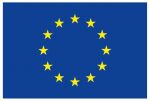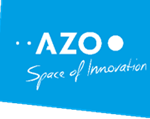Rafael Olmedo Soler
DESCRIPTION
A Volumetric Navigation System defines a system that combines positioning, navigation and volume information in order to provide assistance to all the parties involved in managing and conducting surface vehicle movements, (controllers, drivers, pilots, …), or autopilot surface movements. Thinking about the problem of managing surface movements in an airport, airplanes and land vehicles, they have to share a specific area. Galileo technology will allow absolute reliability and relative positioning of all these to be attained. Associating volume and orientation information to each vehicle, will allow the management of georeferenced volumes, which will improve the utilisation of the space, covering even the movements of land vehicles under the wings of an aircraft. The system will also consider other fixed or moving objects, such as buildings or terminal fingers. In order to develop the system, each vehicle will be provided with positioning and attitude sensors, and will be defined by a body reference system, a geometric volume consisting of a mathematical expression of the reduced envelope of the body, and its dynamical performances and characteristics. Each vehicle will be provided with a communication module in order to send its own information and receive information from other moving objects, or a local control station. Other fixed objects like buildings, natural obstacles, or specific areas could be considered as special, restricted or forbidden areas, depending on the type of vehicle. In this sense, GIS data and tools would add great value.
INNOVATION
Volumetric Navigation introduces the idea of combining the navigation and volume information of vehicles in the real world. Navigation may be understood as the art and technique of reaching one point from another in an efficient way. When considering scenes in which large vehicles are involved (airports, harbours, civil works, etc) it will also manage volume information of the vehicles (aircrafts, boats, etc) and other mobile or fixed elements (fingers, cranes, drawbridges, buildings) and will mean a real improvement in the efficiency of the navigation.
TARGET MARKET
The system may be used in scenes that involve movements of large vehicles in local areas, like surface movement in airports, cargo or transport terminals, docking activities, boats traffic and moorings in harbours, local water areas, or large vehicles involved in civil works. Considering this, the target market may be defined by civil or state responsible or other operators of airports, harbours, or cargo and transport terminals, and public or private companies or organisations, whose activity could mean the deployment of large vehicles in local work areas, such as large civil works vehicle companies, firefighters departments, etc.
CUSTOMER BENEFIT
The key benefits are in terms of the reduction of accidents in terminal areas that support congested traffic and large vehicles, the improvement in the efficiency of navigation in congested areas, and improved pilots or driver behaviour and compliance with traffic regulations.
Contact:
INTA and GeoTeam
Mr. Rafael Olmedo Soler
Ctra. Ajalvir Km.4, INTA,
Laboratorio de Navegación
Torrejón de Ardoz, 28850 Madrid
Spain
phone: +34 (0) 915 20 16 20
e-mail: olmedor@inta.es
www.inta.es
www.geoteam.es






